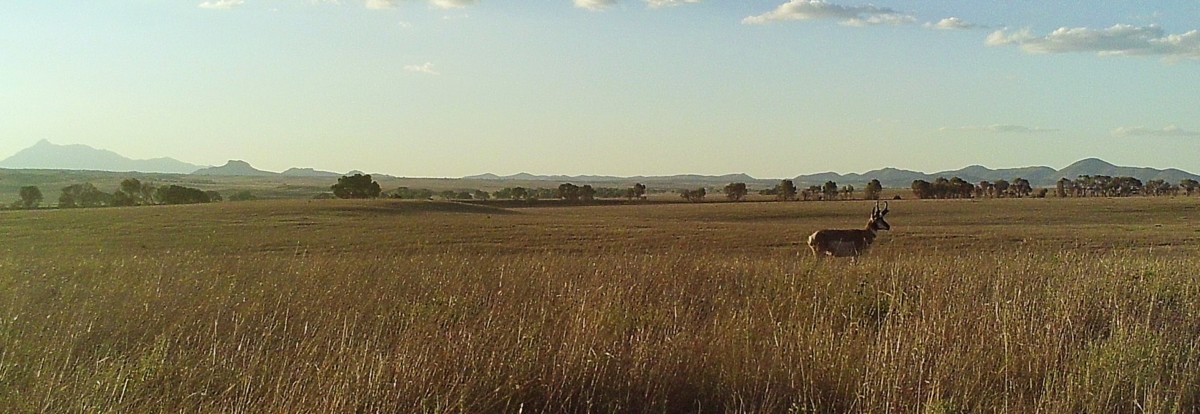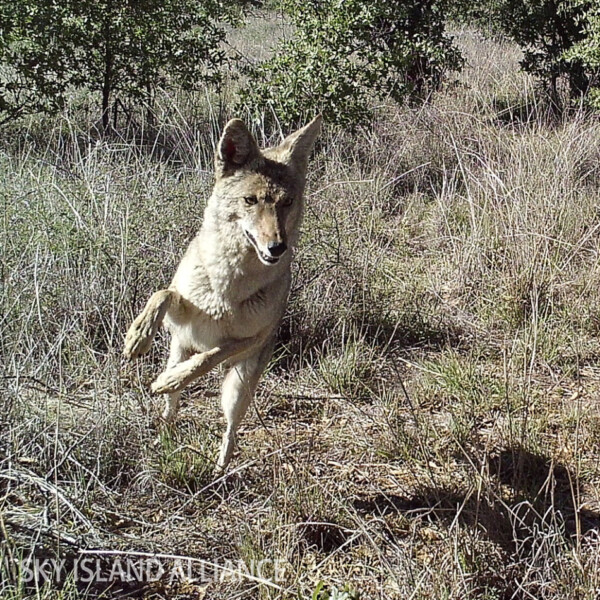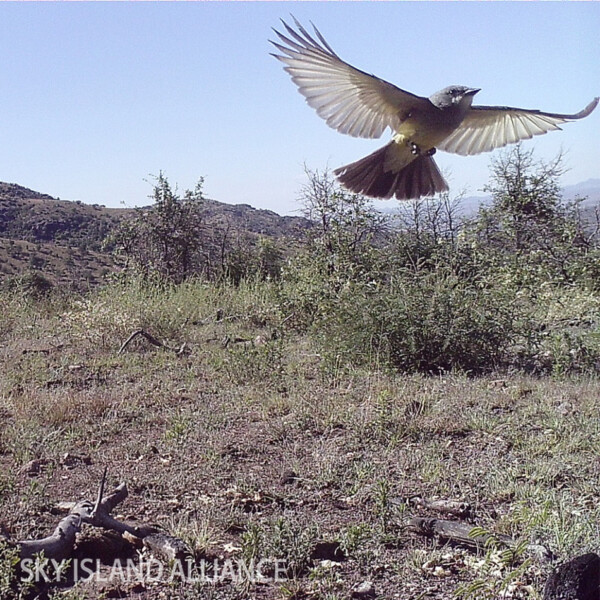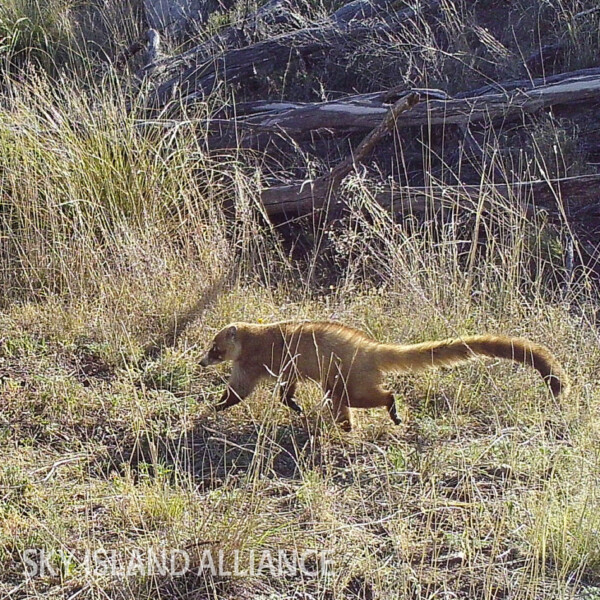Sky Island Alliance staff and volunteers deployed trail cameras along 34 miles of the U.S.-Mexico border in early March 2020. Our mission was to document the wildlife community living in one of the last wild and remote borderland corridors before border wall cuts it in two. Following the TEAM Vertebrate Monitoring Protocol (2011), we designed our Border Wildlife Study to distribute cameras in grid array spanning 48 locations in southern Arizona and 10 in Sonora, MX.
Over the first three months of the study, our Border Wildlife Study cameras documented a wide diversity of mammals, birds, and even some reptiles and insects across the Patagonia Mountains, San Rafael Valley, and Huachuca Mountain foothills. In order to understand which species were observed and how many times each species were detected by our cameras, we first sorted through 1.6 million photographs collected during this time period. Our cameras were sensitive to the motion of grass and other vegetation in the wind and recorded the frequent presence of cattle on the landscape. Once these non-wildlife photographs were removed from our dataset, we analyzed the wildlife photos and realized in amazement just how many species are living in and migrating through the heart of the Sky Island region.
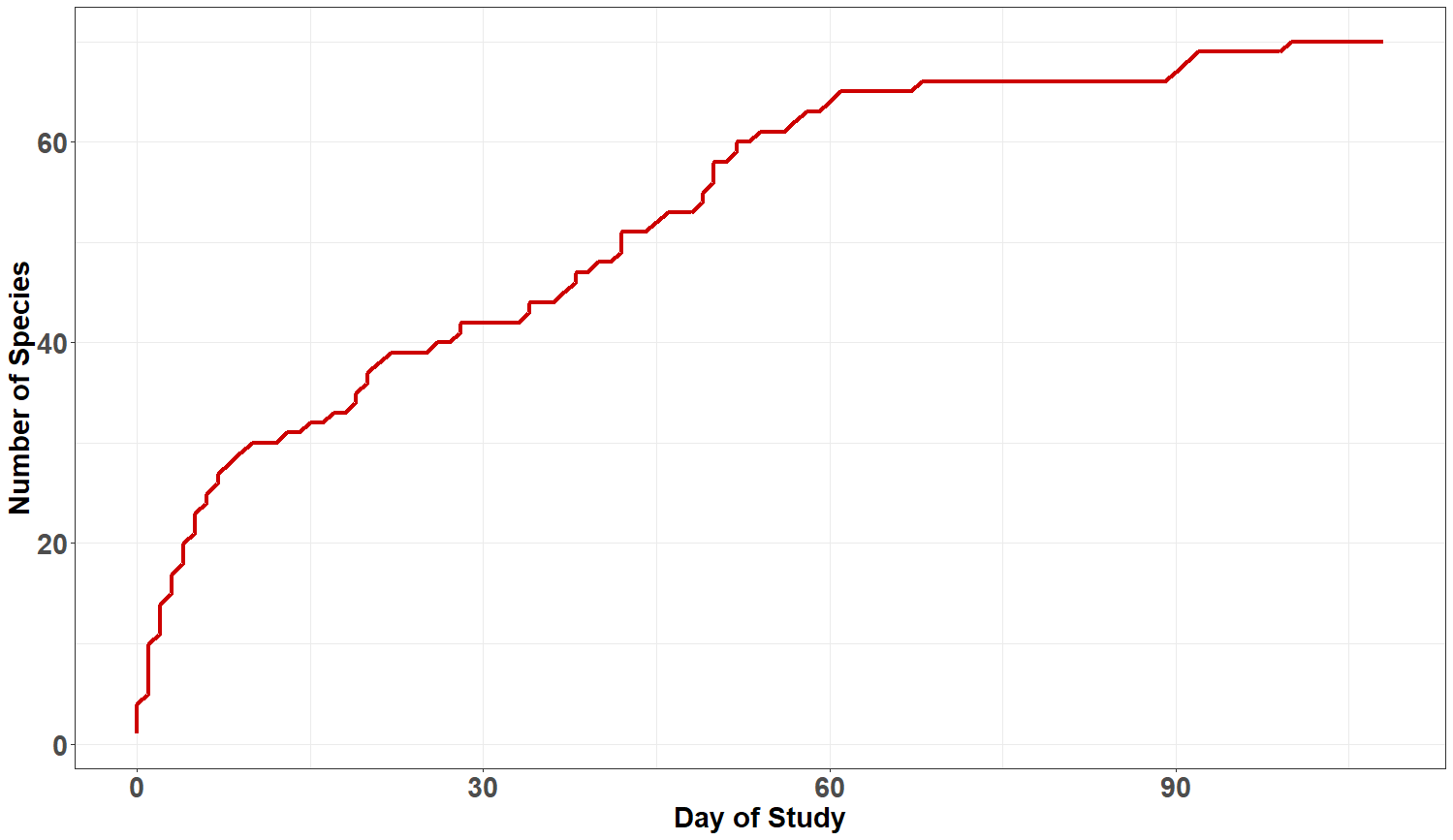
Figure 1: This species accumulation curve shows how many new species were detected in the first 3 months of study across the entire camera array. Common species occurred in the first few weeks, making the curve steep at first. Over time, we expect rare species will be detected and the curve will continue to climb, just more slowly.
We recorded 71 different species this spring—24 mammals, 39 birds, 7 insects, and lizards. We are tracking the rate at which new species occur on our camera network (see Figure 1) to understand when we’ve likely observed a majority of the large vertebrate species present in this area. We detected many species quickly in the first 60 days of the study and the number of new bird species appearing on the cameras continues to increase (Figure 2). Visit our species gallery to see photos of all 71 species recorded so far, including mountain lion, black bear, elf owls, and pronghorn and we are excited about what new species the monsoon season might bring to us!
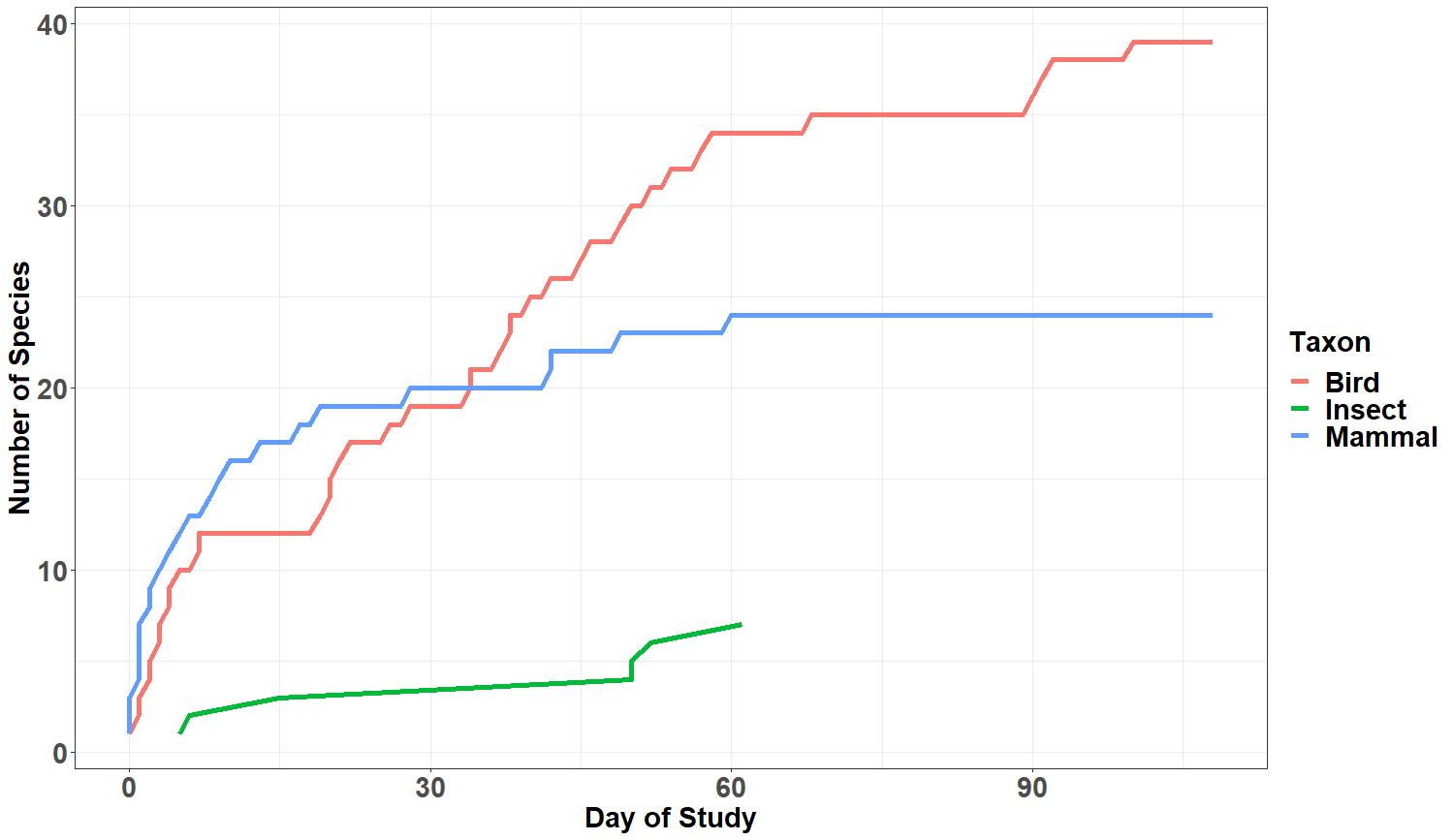
Figure 2: This figure shows separate species accumulation curves for birds, mammals, and insects photographed by our camera array. While the occurrence of new mammal species slowed after about 60 days, new birds continued to appear through the first three months.
We invite you to volunteer for our Border Wildlife Study and help identify the species photographed by our cameras. In partnership with Zooniverse.org, we’ve launched two online portals to help you view our wildlife photographs and contribute species identifications. Visit our Border Birds Study and Border Mammals Study projects now to start identifying species and register here for our next Coffee Break (9:30am MST on Thursday, July 30th) to learn more about using the Zooniverse platform.
Reference: TEAM Network. 2011. Terrestrial Vertebrate Protocol Implementation Manual, v. 3.1. Tropical Ecology, Assessment and Monitoring Network, Center for Applied Biodiversity Science, Conservation International, Arlington, VA, USA.

